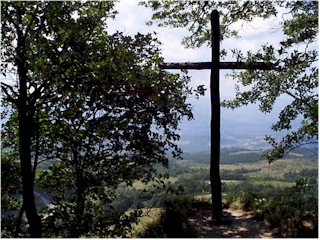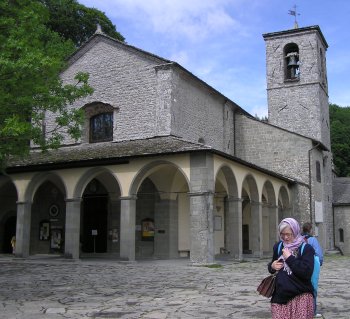What Is La Verna?
Mount La Verna is an isolated mountain hallowed by association with Saint Francis of Assisi, situated in the centre of the Tuscan Appenines, and rising about 4000 feet above the valley of the Casentino. Its name (Latin, Alverna) is said to come from the Italian verb vernare, to make cold or freeze.
On 8 May, 1213, La Verna was given to Saint Francis by Count Orlando of Chiusi as a retreat “specially favourable for contemplation”. Thither the saint withdrew in August, 1224, to keep a forty days fast in preparation for Michaelmas, and it was while praying on the mountain-side that he received (on or about 14 September) the stigmata. Thenceforth La Verna became sacred ground, and Pope Alexander IV took it under his protection.
In 1260 a church was consecrated there in the presence of Saint Bonaventure and several bishops. A few years later the Chapel of the Stigmata was erected, through the munificence of Count Simone of Battifole, near the spot where the miracle took place. An older chapel, Santa Maria degli Angeli, which was built in 1218 for Saint Francis by Orlando, is approached from the sacristy of the Chiesa Maggiore, which was begun in 1348, but not finished until 1459. From the latter church the friars dwelling on La Verna go in solemn procession twice daily (at 2 P.M. and at midnight) to the Chapel of the Stigmata.


On the Feast of the Stigmata (17 September) and on other festivals, large crowds of priests with their people from neighbouring parishes, as well as strangers, visit the mountains, and on such occasions the friars often accommodate and entertain between 2000 and 3000 pilgrims. The convent was partly destroyed by fire in the fifteenth century; it suffered desecration also during the wars of this century.
In 1810, and again in 1866, the friars were expelled as a consequence of the suppression of religious orders. At present they are in possession of La Verna, which belongs, however, to the municipality of Florence.
(Source: Taken entirely from The Catholic Encyclopedia, 1913; in the public domain)